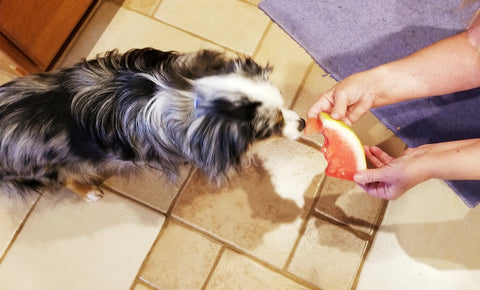Why is My Dog Not Eating? Common Reasons and Solutions
It can be a concerning and frustrating experience when your beloved furry friend suddenly refuses to eat. A lack of appetite in dogs can be caused by a variety of factors, some of which are minor and easily resolved, while others may require closer attention and veterinary care.
Understanding Why Your Dog Is Not Eating
Top Reasons Why Dogs Stop Eating
A dog refusing to eat can be a cause for concern for any pet owner. When your furry companion skips meals or shows a consistent loss of appetite, it's crucial to identify the underlying reasons. While there can be various factors at play, some of the top reasons why dogs stop eating include:
Illness or Pain:
One of the most common reasons for a loss of appetite in dogs is an underlying illness or pain. When dogs are unwell, they often lose their appetite. Keep an eye out for symptoms such as vomiting, diarrhea, lethargy, or changes in behavior. If you suspect illness, consult your veterinarian for a proper diagnosis.
Dental Issues:
Dental problems, such as broken teeth, gum inflammation, or tooth decay, can make eating painful for your dog. Checking your dog's teeth regularly and scheduling dental check-ups can help address this issue.
Dietary Changes:
Dogs are creatures of habit, and abrupt changes in their diet can lead to a loss of appetite. Transition between dog food brands or types gradually to avoid digestive upset. If you've recently altered their food, consider going back to their previous diet or introducing the new food slowly.

Stress or Anxiety:
Dogs, like humans, can experience stress and anxiety. Major life changes, such as moving to a new home or the addition of a new family member or pet, can trigger anxiety and affect their appetite. Creating a calm and consistent environment and offering reassurance can help alleviate stress.
Spoiled Food:
The quality and freshness of your dog's food are crucial. Spoiled or rancid food can be unappetizing and potentially harmful. Store their food properly and follow recommended storage guidelines.
Age-Related Changes:
As dogs age, their metabolism and dietary needs change. Older dogs may eat less and require specific nutrients. Consult your veterinarian to adjust their diet to meet their evolving nutritional requirements.
Environmental Factors:
Extreme temperatures can impact a dog's appetite. Dogs may eat less during hot weather and more in cold conditions. Ensure they have access to fresh water and consider adapting their feeding schedule and portion sizes accordingly.
Allergies or Food Sensitivities:
Food allergies or sensitivities can lead to digestive issues and reluctance to eat. Work with your veterinarian to identify and eliminate problematic ingredients from their diet.
Medical Conditions:
Certain medical conditions, such as kidney disease, liver problems, or thyroid issues, can cause a decreased appetite. Regular veterinary check-ups can help detect and manage these conditions.
How to Get Your Dog to Eat Again
Getting your dog to eat again can be a challenging task, especially when they've lost their appetite. Here are some strategies to help encourage your dog to eat:
Ensure a Clean and Calm Environment:
Create a quiet and comfortable eating environment for your dog. Avoid distractions and loud noises during mealtime to reduce stress and anxiety.
Maintain a Regular Feeding Schedule:
Establish a consistent feeding schedule, offering meals at the same times each day. This routine can help stimulate your dog's appetite.
Limit Treats and Table Scraps:
Reduce the number of treats and table scraps you give to your dog. Extra snacks can fill them up and discourage them from eating their regular meals.
Choose High-Quality Food:
Opt for high-quality dog food that is nutritionally balanced. Your veterinarian can recommend a suitable brand or type of food based on your dog's specific needs.
Warm the Food:
Gently warm your dog's food, but ensure it's not too hot. Warming can enhance the aroma and make the food more enticing.
Try Wet Food or Mix-Ins:
If your dog refuses dry kibble, consider offering wet food or adding a small amount of wet food as a topper. Some dogs find wet food more palatable.
Hand-Feeding:
Try hand-feeding your dog small portions of food. This can create a positive association between you and mealtime, especially if your dog is anxious or stressed.
Use Food Puzzles or Slow Feeders:
Food puzzles and slow feeders can make mealtime more engaging for your dog. These devices require them to work for their food, which can stimulate their appetite and provide mental enrichment.

Change the Feeding Location:
Sometimes, a simple change in the location of their food bowl can pique your dog's interest. Try moving the bowl to a different spot in your home.
Add Broth or Low-Sodium Stock:
A small amount of low-sodium chicken or beef broth can be added to their food to make it more appealing. Make sure the broth is safe for dogs and doesn't contain any harmful additives.
Monitor Water Intake:
Ensure your dog stays hydrated. Offer fresh water throughout the day to prevent dehydration, which can accompany a loss of appetite.
Be Patient and Avoid Force:
Avoid forcing your dog to eat or becoming frustrated. Be patient and understanding during this challenging time.
Record Daily Progress:
Keep a daily record of your dog's eating habits and any changes in behavior. This information can be helpful for your veterinarian in determining the effectiveness of your strategies.
Revisit Your Veterinarian:
If your dog's loss of appetite persists or worsens, consult your veterinarian for further evaluation. They may recommend additional tests or treatments.
It's essential to address the root cause of your dog's loss of appetite, and these strategies can help encourage them to eat again. Remember that some dogs may take time to regain their appetite, so patience and persistence are key.
Always prioritize your dog's health and well-being, and work closely with your veterinarian to ensure they receive the appropriate care.
